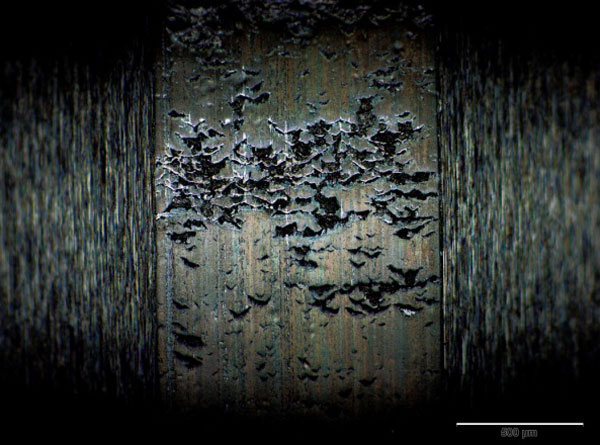Micropitting and Gear Lubrication Design Considerations
Gear Products and Suppliers | Gear Knowledge Menu
Micropitting occurs on surface-hardened gears and is characterized by extremely small pits approximately 10 m (400 -inches) deep. Micropitted metal has a frosted or a gray appearance. This condition generally appears on rough surfaces and is exacerbated by use of low-viscosity lubricants. Slow-speed gears are also prone to micropitting due to thin lubricant films. Micropitting may be sporadic and may stop when good lubrication conditions are restored following run-in.
Micropitting and Load Capacity of Gears: The micropitting load-carrying capacity of gears can be calculated according to ISO TR 15144-1, where the influence of lubricant, operating conditions, and surface roughness is considered with the specific lubricant film thickness.
For this purpose, the specific lubricant film thickness of a practical gear is compared with a minimum required specific lubricant film thickness. The latter is the specific film thickness where no micropitting risk is given for a lubricant and can be determined by performing a micropitting test according to FVA 54/7 .
 Micro-Pitting |
|---|
Standard Micropitting Test for Gears: The micropitting test according to FVA 54/7 consists of a load stage test and an endurance test. Test gears type C-GF run at a circumferential speed of 8.3 m/s and a lubricant temperature of 90°C or 60°C. The load and the test periods are varied.
Design Considerations for Gears Maintaining adequate lubricant film thickness is the most important factor influencing the formation of micropitting. Higher-speed operation and smooth gear tooth surfaces also hinder formation of micropitting. The following guidelines should be observed to reduce the onset of micropitting in gear units:
-
Use gears with smooth tooth surfaces produced by careful grinding or honing.
-
Use the correct amount of cool, clean, and dry lubricant with the highest viscosity permissible for the application.
-
Use high speeds, if possible.
-
Use carburized steel with proper carbon content in the surface layers.